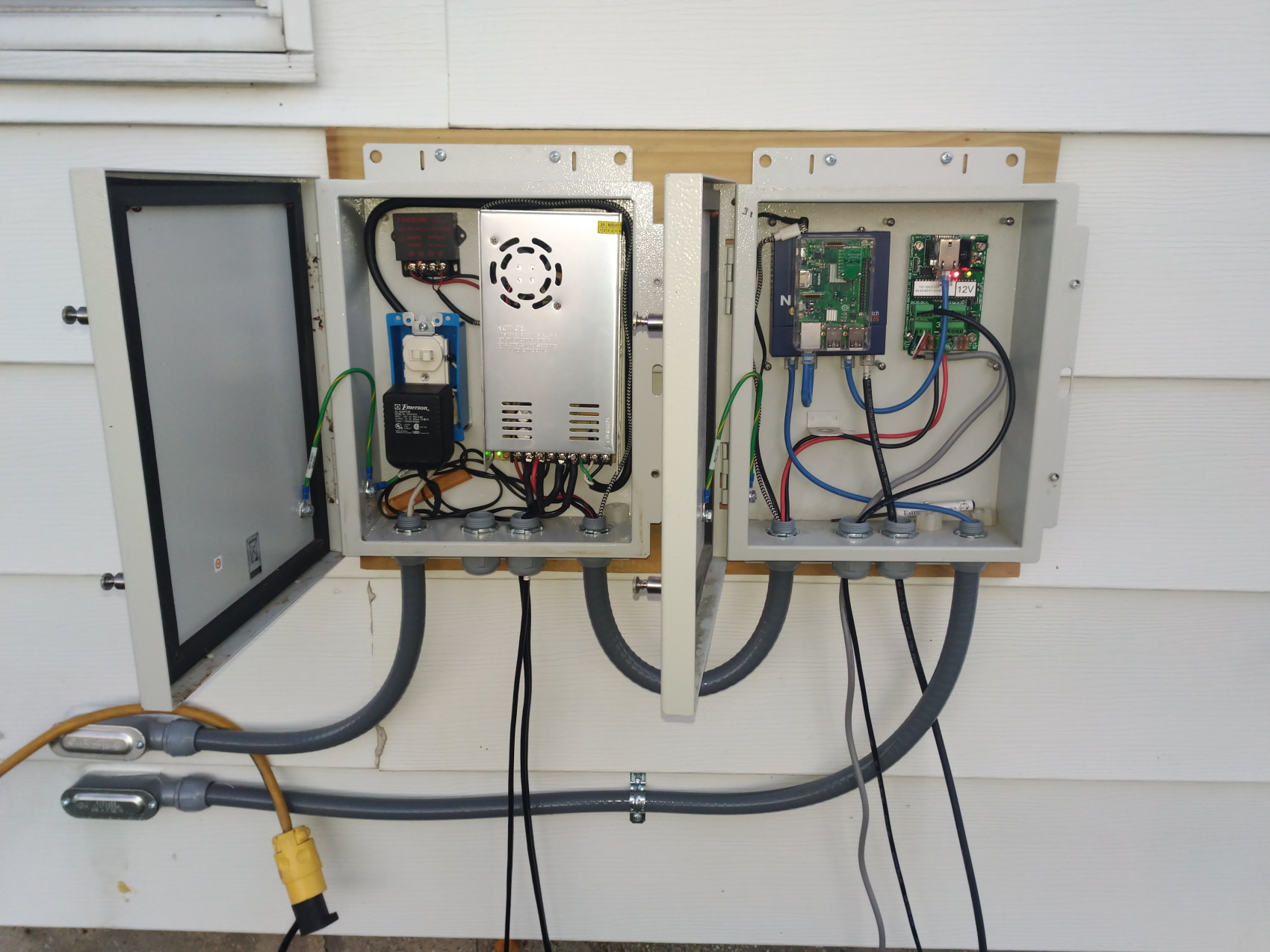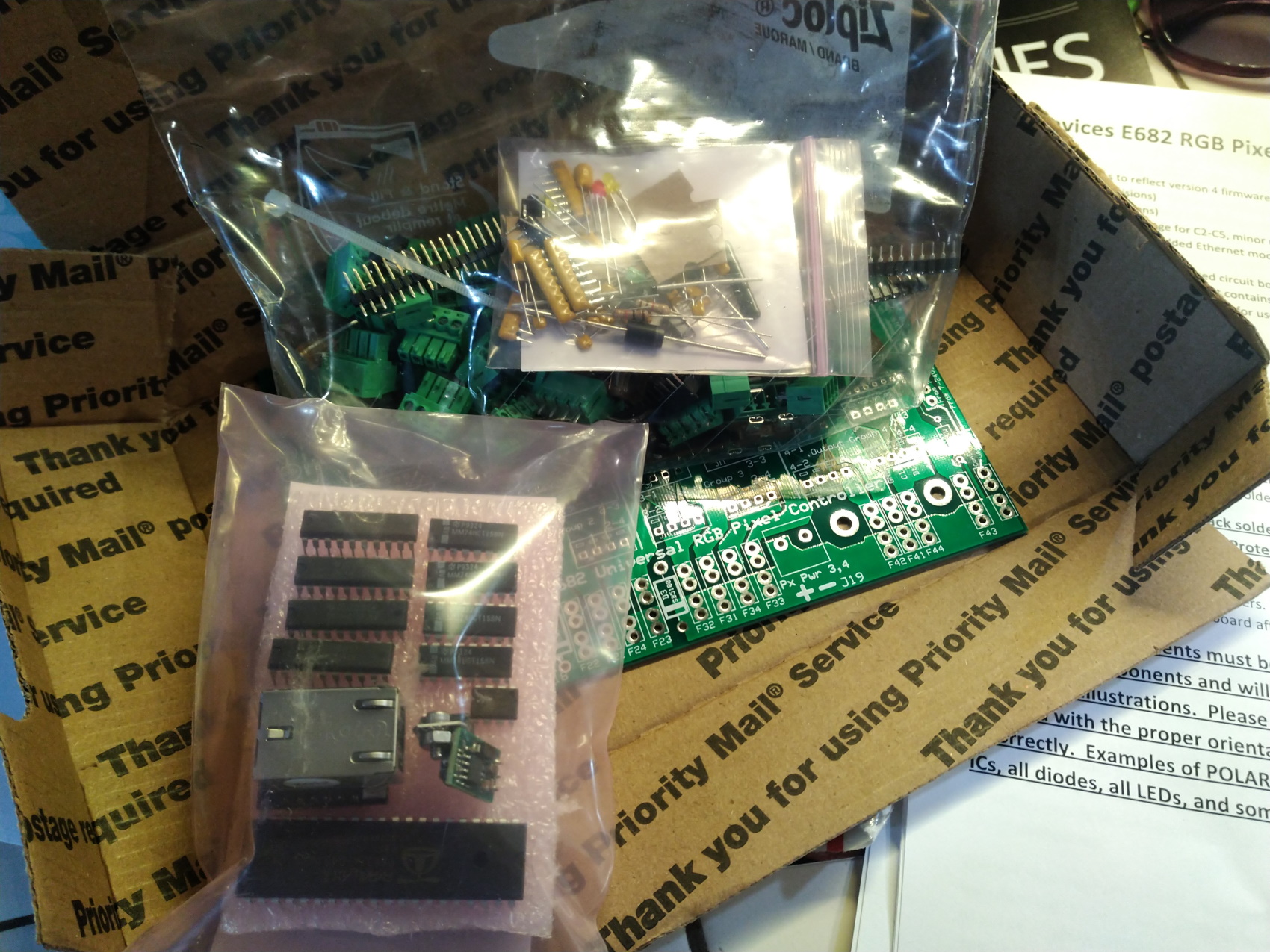Over 6000 lights
Each light (called a pixel) can be controlled independently and set to any desired color. They are WS2811 RGB bullet pixels, meaning each LED light can be set to any desired color individually. These lights were originally designed to be used in digital signs. Pixel light shows have now turned into it's own industry!
Lights run on 12V DC
There are multiple 12VDC power supplies running all of the outdoor lights. This entire display only uses 3 extension cords, one to the trees, one for the inflatable decorations, and one to the pole!
FM Radio Transmitter
Tune to FM 93.1 on your car stereo to hear the lights! There is a low powered FM transmitter connected to the Raspberry Pi computer that runs the show.
Show runs on a Raspberry Pi computer
A Raspberry Pi Linux computer runs the light snow. It is completely scheduled and automated.
Multiple Controllers
Pixel controllers take the data from my network and translate it to the language that the lights speak. We have multiple pixel and RGB controllers from a few different manufacturers that take the network data from the Raspberry Pi computer and translate it into the language that each bulb uses.
xLights Software
xLights software is used to sequence the lights and sync them with music.https://xlights.org/. We have a complete 3D model of our light show setup in the software so we can work on programming and design all year. Each song can take from 4 to 8+ hours to design the lights for.



